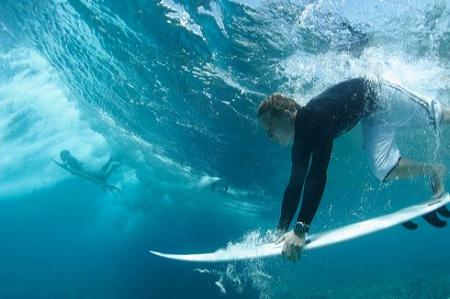As a wave approaches the shore line the depth of the water begins to decrease. As this happens there is more friction located at the bottom of the wave where it interfaces the sea-floor. Due to this added friction the wave begins to slow down near the bottom. The top of the wave is unrestricted and continues to move at the same velocity. Due to this effect the wave begins to increase in height (potential energy) then as the wave begins to crash it releases energy in the form of sound, heat, erosion, and turbulent water. There are generally two different types of waves: Spilling and Plunging. Spilling waves crest and the white turbulent water continues to the shore. Plunging waves can be thought of as dumping, throwing, and spitting waves; they increase in height until the top lip begins to fall over the edge with a velocity of such that tunnels, or barrels are formed which make for intense surfing.
There are 4 parameters of breaking waves:
- Wave Height
- Intensity
- Peel Angle
- Wave Section Length
The peel angle is the angle between the white water and the surfing surface. The faster the wave the smaller the peel angle.
The part of the wave that is steepest is called the shoulder, and this is where you get most of your velocity.
As a wave progresses through the water, individual water particles orbit around the wave in a method called orbital progressive waves. It is this motion that pushes other water molecules and transfers energy to surrounding molecules and into shore.


